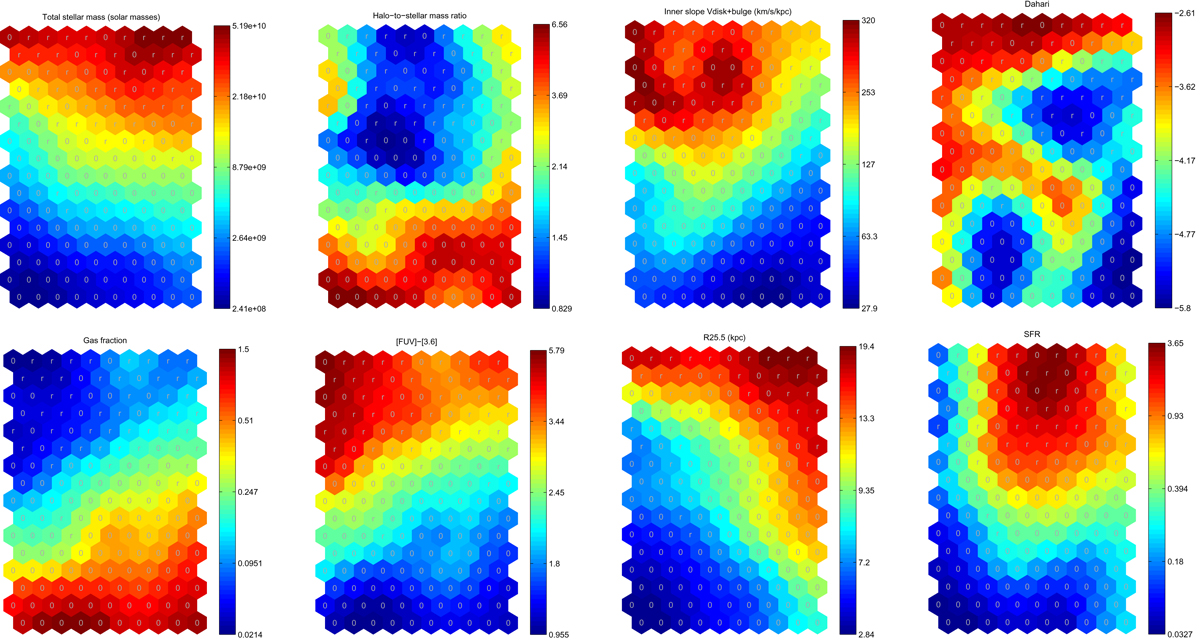Fig. 11.

Component planes after training a self-organising map (Kohonen 2001) using the Toolbox package (Vesanto et al. 2000) (see text for details on the method and the data set used for the training). A sample of 1320 non-highly inclined (i < 65°) disc galaxies, with and without inner rings, has been used. Each hexagon corresponds to a neuron of the SOM, and the colour palette indicates the value of the prototype associated to a given measurement (see the vertical bar); the values of the different components have been de-normalised to the original range. The component names are indicated in the titles of the subplots. We show, from left to right and top to bottom, the total stellar mass, halo-to-stellar mass ratio within the optical radius, inner slope of the disc+bulge contribution to the circular velocity, Dahari parameter, cold gas fraction, [FUV] – [3.6] colour, disc size estimated from R25.5, and star formation rate. We overplot the labels of each map unit with a letter that indicates the winning class: inner ringed (“r”) or not (“0”). This is calculated by counting the times that this neuron acts as a best matching unit of data vectors associated to inner ringed or non-ringed galaxies.
Current usage metrics show cumulative count of Article Views (full-text article views including HTML views, PDF and ePub downloads, according to the available data) and Abstracts Views on Vision4Press platform.
Data correspond to usage on the plateform after 2015. The current usage metrics is available 48-96 hours after online publication and is updated daily on week days.
Initial download of the metrics may take a while.


